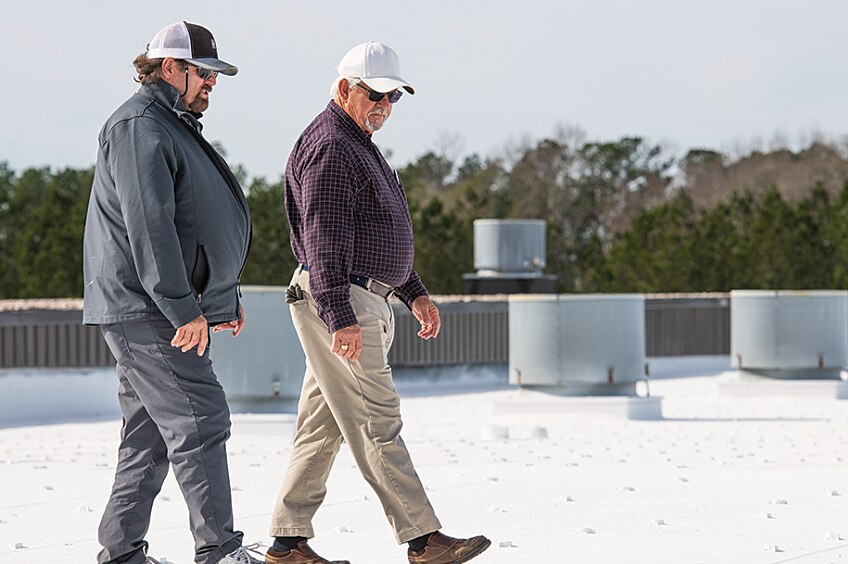Your roof is the great unsung hero of both your building envelope and your bottom line. Although it's rarely seen, it's constantly under assault from the elements, including rain, wind, extreme cold and heat, UV rays, contaminants, and more. And it forms the first line of defense against unexpected and unwanted expenses.
Like tossing a stone into a still river, postponing roof maintenance can drive financial ripples throughout your entire business, from shortening the longevity of the roof itself to disrupting business, employees, and tenants.
On the other hand, making sure your roof receives professional roof maintenance can pay off in ways you may never have expected. Perhaps the greatest benefit of a regular maintenance program is the chance to catch issues early and while they are still repairable. This can help extend the time between re-roofs and maximize the value of your investment. But that's just the start.
Let's start at the top. Regular, professional commercial roof maintenance can help protect your roof investment by giving you a chance to:
- Identify small problems, like loose flashings, clogged drains, standing water, and so on, before they become expensive issues
- Prevent accumulation of chemical contaminants that may harm the roof membrane
- Remove wind-blown debris that can damage, or even puncture, the roof
- Keep reflective surfaces clean so they can provide maximum reflectivity
- Remove organic debris that can provide a food source for destructive algae, plants, birds, and four-legged pests
- Meet the owner maintenance requirements in GAF guarantees
- Potentially qualify your roof for the GAF WellRoof Guarantee Extension, which extends the duration of GAF Diamond Pledge™ NDL Roof Guarantees by up to 25% for eligible roofs (additional requirements and restrictions apply)
Below the roof, professional maintenance can help prevent lost revenue from:
- Damage to building contents
- Dissatisfied tenants
- Premises liability exposure
- Reduced space as leaks put rooms or floors out of service
- Equipment downtime
- Potential energy loss caused by wet/deteriorated insulation
It's important to keep in mind that one storm can alter the condition of your roof in a matter of hours. Having a professional inspect right away for debris, water, clogged drains, loosened flashings, and wind uplift can often mean the difference between a simple clean-up and an expensive repair.
If you'd like to set up a preventative maintenance program, please visit us.gaf.com/TalkToGAF.

